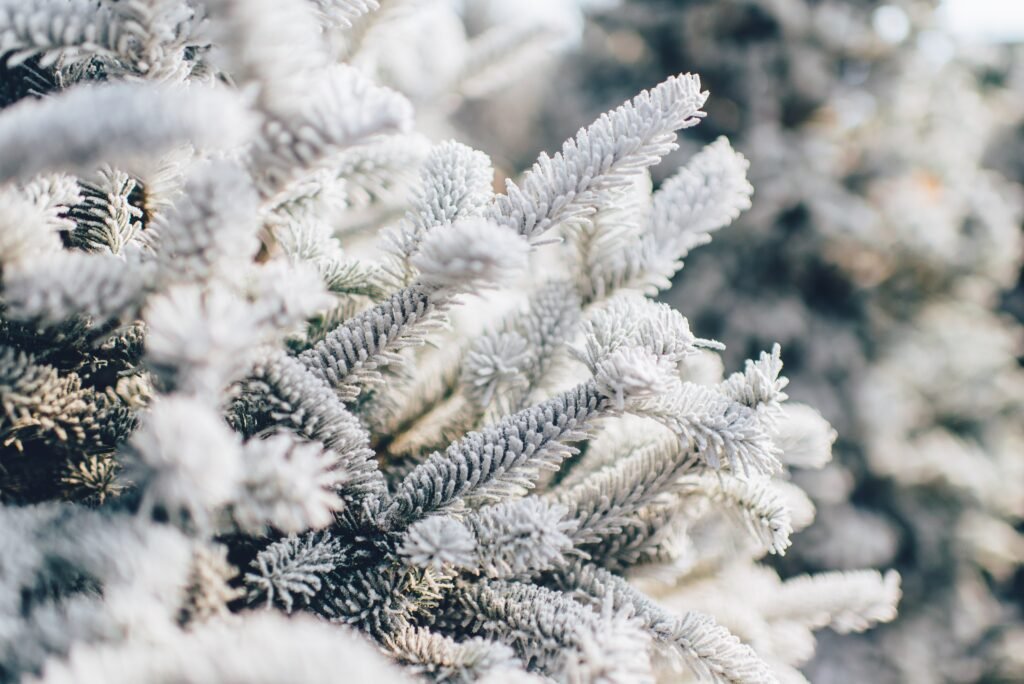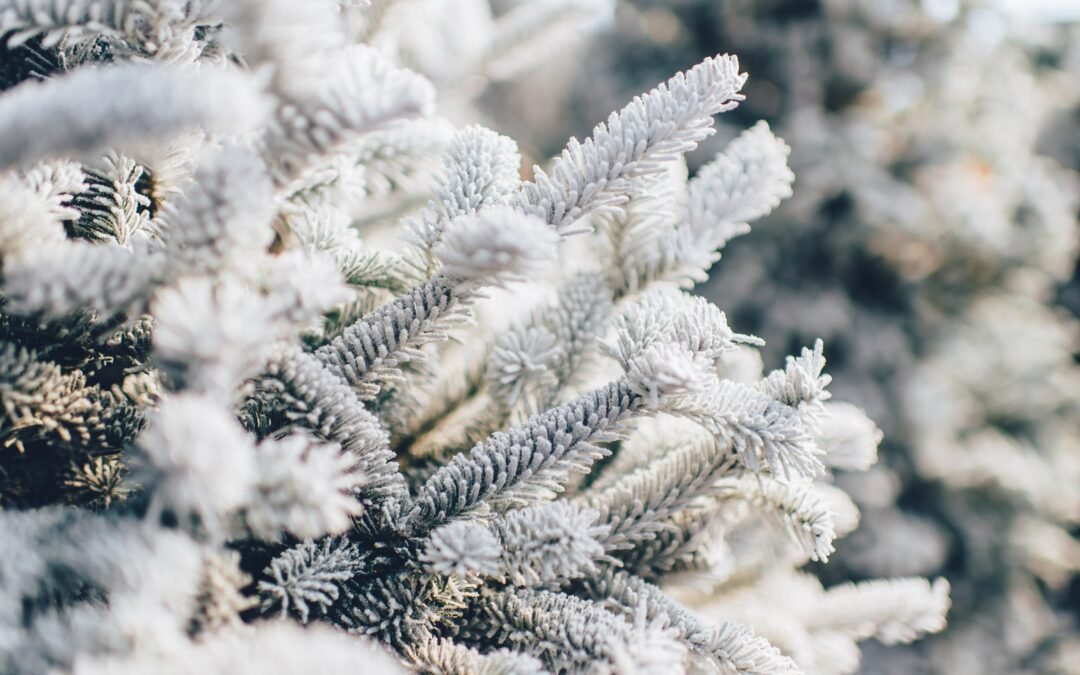Winter can be a challenging season for landscaping enthusiasts. As the temperature drops and the snow starts falling, maintaining a vibrant and appealing outdoor space becomes a daunting task. However, with the right knowledge and preparation, you can ensure that your landscape not only survives but thrives during the winter months. From protecting delicate plants to creating a winter wonderland with strategic design elements, this article will provide you with valuable insights and practical tips to keep your landscaping stunning even in the harshest of winters. Whether you’re a homeowner or a professional landscaper, get ready to master the art of landscaping in winter.

Choosing Winter-Friendly Plants
Consider Evergreen Trees and Shrubs
When choosing plants for your winter landscape, it’s essential to consider evergreen trees and shrubs. These plants retain their leaves year-round, providing a much-needed burst of green in the winter months. Evergreens, such as pine, spruce, and juniper, not only add color but also serve as a natural backdrop for other winter landscaping features.
Look for Plants with Winter Interest
In addition to evergreens, it’s also beneficial to look for plants with winter interest. These are plants that display unique characteristics during the cold season, such as colorful berries or interesting bark textures. Some examples of winter-interest plants include red twig dogwood, winterberry holly, and Japanese maple trees. Choosing these types of plants ensures that your landscape remains visually appealing even in the winter months.
Choose Cold-Weather Perennials
When selecting plants for your winter landscape, it’s crucial to choose cold-weather perennials. These are plants that can tolerate freezing temperatures and still thrive. Some popular cold-weather perennials include coneflowers, ornamental grasses, and winter pansies. By incorporating these plants into your winter garden, you can ensure a burst of color and beauty throughout the snowy season.
Consider Winter-Blooming Plants
To add a touch of vibrancy to your winter landscape, consider incorporating winter-blooming plants. These are plants that actually produce flowers during the colder months. Some popular winter-blooming plants include witch hazel, snowdrops, and winter jasmine. By strategically planting these plants, you can enjoy blossoms and fragrance even on the coldest days of the year.
Preparing the Soil
Clearing Debris and Leaves
Before winter sets in, it’s important to clear your landscape of debris and leaves. Removing fallen leaves and other debris not only improves the aesthetics of your garden but also helps prevent disease and pests. Leaves left on the ground can trap moisture and contribute to fungal growth, which can damage plants during the winter months. By thoroughly clearing the area, you ensure a healthy environment for your plants.
Aerating the Soil
Aerating the soil is another vital step in preparing your landscape for winter. This process involves creating small holes in the soil to improve air circulation, water absorption, and nutrient uptake. By aerating the soil, you alleviate compaction, which can hinder root growth and overall plant health. This procedure is especially crucial in areas with heavy foot traffic or clay soil.
Adding Organic Matter
To enhance the soil’s fertility and structure, it’s recommended to add organic matter before winter arrives. This can include compost, well-rotted manure, or leaf mold. Organic matter improves soil drainage, retains moisture, and provides essential nutrients for plant growth. By incorporating organic matter into your soil, you ensure that your plants have the necessary resources to withstand the cold and potentially harsh winter conditions.
Testing the pH Levels
Before winter, it’s also beneficial to test the pH levels of your soil. Different plants thrive in different pH ranges, and knowing your soil’s pH can help you choose the right plants for your winter landscape. Most plants prefer a slightly acidic to neutral pH, around 6.0 to 7.0. If your soil’s pH is too high or too low, you can take steps to adjust it accordingly, ensuring optimal plant health and growth.
Protecting Plants from Cold
Mulching the Soil
One of the most effective ways to protect your plants from the cold is by mulching the soil. Applying a layer of organic mulch, such as wood chips, straw, or shredded leaves, helps insulate the soil, preventing extreme temperature fluctuations. Mulch also helps retain moisture, reducing the risk of dehydration in plants. Additionally, mulch acts as a barrier against weed growth, inhibiting competition for nutrients and sunlight.
Using Plant Covers
For more delicate plants, using plant covers can provide additional protection from freezing temperatures and harsh winter conditions. Plant covers, also known as frost blankets or row covers, create a microclimate around the plant, trapping heat and moisture. These covers are made from lightweight, breathable materials that allow sunlight and air to penetrate while insulating against cold temperatures. Using plant covers can significantly reduce the risk of frost damage to your plants.
Building Windbreaks
Cold winter winds can be damaging to plants, causing dehydration and breakage. To protect your plants from strong winds, consider building windbreaks. Windbreaks act as barriers that redirect or slow down wind, reducing its impact on surrounding plants. You can use various materials for windbreaks, such as fences, hedges, or walls. It’s important to place windbreaks strategically, ensuring they don’t create excessive shade or obstruct essential sunlight.
Transplanting Vulnerable Plants
If you have plants that are particularly vulnerable to cold temperatures, you may want to consider transplanting them into more protected areas of your garden. For example, if you have potted plants that cannot withstand freezing temperatures, you can move them indoors or to a sheltered location. Similarly, if you have tender perennials, you may consider digging them up and planting them in containers that can be brought indoors during the winter months. Transplanting vulnerable plants ensures their survival and allows you to enjoy them for many more seasons to come.
Winter Pruning and Trimming
Pruning Dormant Trees and Shrubs
Winter is an ideal time to prune dormant trees and shrubs. Pruning during this season helps to shape the plant’s structure, remove dead or diseased branches, and promote healthy growth in the upcoming spring. It’s important to wait until the plants are truly dormant before pruning, usually after the first hard freeze. By pruning during winter, you can improve the overall health and appearance of your landscape.
Removing Dead or Diseased Branches
During winter, it’s crucial to remove any dead or diseased branches from your trees and shrubs. Dead branches are not only unsightly, but they can also pose a safety hazard as they are more prone to breakage under the weight of snow or ice. Removing dead branches improves the plant’s overall structure and enhances its ability to resist winter damage. Additionally, eliminating diseased branches helps prevent the spread of diseases to other parts of the plant or nearby plants.
Trimming Hedges and Bushes
Keeping hedges and bushes well-trimmed during winter is essential for maintaining their shape and overall health. Trimming during the dormant season helps control growth and prevents excessive stretching and leaning of the branches. When trimming hedges and bushes, it’s important to avoid cutting into the main stems, as this can stunt growth and leave the plant vulnerable to diseases and pests. Regular trimming during winter ensures a neat and well-maintained appearance.
Shaping Trees for Winter Interest
Winter is an excellent time to shape trees to enhance their visual appeal during the colder months. By selectively pruning and shaping certain tree species, you can create interesting and eye-catching silhouettes against the winter sky. Conifers, with their unique branching patterns, lend themselves well to shaping for winter interest. By shaping trees specifically for winter, you can add aesthetic value to your landscape even when there is minimal foliage or flowering.

Maintaining the Lawn
Continue Mowing Regularly
Contrary to popular belief, mowing the lawn should not be disregarded during the winter months. Although the grass may not be actively growing as it does in the warmer seasons, it’s still important to continue mowing regularly. This prevents the grass from becoming excessively long and susceptible to disease. Additionally, regular mowing helps to distribute any fallen leaves or debris evenly across the lawn, which can ultimately benefit the soil and surrounding plants.
Avoid Heavy Foot Traffic
During winter, it’s crucial to minimize foot traffic on the lawn. Walking on frozen or snow-covered grass can cause compaction, leading to poor drainage and root damage. To prevent these issues, designate clear pathways for foot traffic and encourage family members or visitors to stick to those areas. By avoiding heavy foot traffic, you preserve the health and integrity of your lawn, ensuring its full recovery once temperatures rise.
Prevent Snow Mold and Ice Damage
Snow mold is a common lawn disease that can occur during winter when snow covers the grass for an extended period. To prevent snow mold, avoid piling excessive snow on your lawn, especially in areas prone to waterlogged conditions. Additionally, clearing leaves and debris before the first snowfall can help minimize the risk of disease. Ice damage is another concern during winter, as ice buildup can smother the grass and cause breakage. For this reason, it’s important to remove any ice accumulation promptly to promote healthy growth once spring arrives.
Overseeding Bare Spots
If your lawn has bare spots or areas of thin grass, winter is a great time to overseed. Overseeding involves spreading grass seed over the existing lawn to fill in gaps and strengthen the overall density. The cool temperatures and occasional snowfall during winter provide an ideal environment for seed germination. By overseeding during winter, you give the new grass a head start before the more rapid growth in spring, resulting in a lush and vibrant lawn.
Creating Winter Landscaping Features
Installing Outdoor Lighting
Installing outdoor lighting can dramatically transform your winter landscape, creating a captivating nighttime ambiance. Consider adding landscape lighting fixtures strategically to highlight key elements, such as trees, shrubs, or pathways. This not only enhances the visual appeal of your garden but also provides added safety and security during the darker months. Choose energy-efficient and weather-resistant lighting options to ensure longevity and optimal performance in winter conditions.
Adding Hardscape Elements
Incorporating hardscape elements into your winter landscape adds structure and visual interest. Hardscape elements include features such as stone or brick pathways, patios, retaining walls, and pergolas. These elements can provide an attractive contrast to the winter scenery and serve as focal points in your garden. Additionally, hardscaping can create areas for seating or outdoor gatherings, allowing you to enjoy your winter landscape comfortably.
Building a Fire Pit or Outdoor Fireplace
A fire pit or outdoor fireplace is a fantastic addition to your winter landscape, providing warmth and creating a cozy atmosphere. These features allow you to extend your time outdoors, even in chilly weather. Gathering around a crackling fire can create a sense of relaxation and camaraderie during the winter months. Be sure to follow safety guidelines and regulations when building or installing fire pits or outdoor fireplaces, and always practice responsible fire management.
Creating Water Features
Water features can bring a unique element of tranquility to your winter landscape. The sound of flowing water can create a peaceful ambiance, even when the weather is cold. Consider incorporating elements such as fountains, ponds, or small waterfalls into your garden design. With proper care and maintenance, water features can be enjoyed year-round, adding a touch of elegance and serenity to your winter landscape.

Attracting Wildlife during Winter
Providing Bird Feeders
Attracting birds to your winter landscape not only adds beauty but also provides a vital food source for these creatures during the colder months. Place bird feeders in visible and accessible locations, filled with a variety of seeds and grains suitable for local bird species. Regularly clean and refill the feeders to ensure a steady supply of food. Observing birds visiting your garden can be a delightful and educational experience, enhancing your winter landscape’s overall appeal.
Planting Berry-Producing Shrubs
Berry-producing shrubs can provide a valuable food source for wildlife during the winter. Plants such as holly, winterberry, and viburnum produce vibrant berries that not only add color to your garden but also attract birds and other wildlife. These shrubs provide a natural and sustainable food supply for animals, ensuring their survival during the colder months. By planting berry-producing shrubs, you contribute to the ecological balance of your winter landscape.
Building Nesting Boxes
Creating nesting boxes or birdhouses can provide shelter and nesting opportunities for birds during the winter. By strategically placing nesting boxes around your garden, you encourage birds to take up residence, providing them with a safe and cozy haven. Different bird species have specific requirements for nesting boxes, so be sure to research the needs of local birds and construct boxes accordingly. Building nesting boxes can promote biodiversity and contribute to the overall health of your winter landscape.
Creating a Winter Wildlife Habitat
To attract a diverse range of wildlife to your winter landscape, consider creating a habitat that meets their specific needs. Incorporate elements such as brush piles, rock piles, or fallen logs to provide shelter and hiding places for small animals and insects. Additionally, allow natural areas to grow and flourish, such as leaving a portion of your garden unraked to provide a habitat for overwintering insects. By creating a winter wildlife habitat, you foster a sustainable and thriving ecosystem within your landscape.
Dealing with Snow and Ice
Removing Snow from Plants
During heavy snowfall, it’s important to remove excess snow from plants to prevent damage. Use a broom or brush with soft bristles to gently remove the snow, starting from the bottom of the plant and working your way up. Be careful not to shake branches vigorously or use sharp objects that could cause injury. Removing snow helps prevent breakage and ensures that the plant receives sufficient sunlight and air circulation.
Avoiding Salt and Chemicals
When dealing with snow and ice on walkways or driveways, it’s important to avoid using salt or chemicals that can harm your plants. Salt can seep into the soil and cause damage to plants’ roots, leading to dehydration and nutrient imbalances. Instead, opt for alternative ice melting substances that are environmentally friendly, such as sand or kitty litter. These substances provide traction without posing a risk to your winter landscape.
Using Organic Deicers
If necessary, you can use organic deicers to melt ice on your pathways without harming your plants. Organic deicers are typically made from materials such as beet juice or alfalfa meal, which are safe for plants and the environment. These deicers work by lowering the freezing point of water, allowing ice to melt without causing damage. When using organic deicers, follow the instructions on the package and apply them sparingly to minimize their impact on surrounding vegetation.
Preventing Ice Formation
To prevent ice formation on your plants, there are a few steps you can take. Firstly, ensure proper drainage in your garden by regularly clearing out gutters and downspouts. This prevents standing water, which can freeze and damage plants. Secondly, prune trees and shrubs to maintain a good balance of branches, reducing the risk of snow or ice accumulation. Lastly, consider applying anti-transpirant sprays to your plants’ foliage. These sprays create a protective coating that reduces water loss and can prevent ice formation.
Winter Care for Potted Plants
Moving Potted Plants to Sheltered Areas
Potted plants are more vulnerable to cold temperatures than plants in the ground, as their roots are not as insulated. To protect your potted plants during winter, move them to sheltered areas, such as a covered porch or an unheated garage. Ensure that the chosen location provides adequate protection from frost and cold winds. Additionally, consider placing the pots on insulating materials, such as wooden pallets or bricks, to further minimize the risk of freezing.
Insulating Containers
To provide extra insulation for potted plants, consider insulating the containers themselves. You can wrap the pots with bubble wrap or burlap to create a protective barrier against freezing temperatures. Alternatively, you can place the pots inside larger containers and fill the space between them with insulating materials, such as straw or dried leaves. Insulating containers helps regulate the temperature around the plant roots, reducing the risk of frost damage.
Avoiding Overwatering
During winter, it’s crucial to adjust your watering routine for potted plants. Since plants grow more slowly or become dormant in the colder months, they require less water. Overwatering can lead to root rot or freeze damage as excess moisture cannot evaporate as quickly. Before watering your potted plants, carefully check the soil’s moisture level by inserting your finger into the soil up to the first knuckle. If it feels moist, it’s best to wait before watering again.
Monitoring Temperature Conditions
Regularly monitoring temperature conditions is essential for the winter care of potted plants. Invest in a thermometer to keep track of the temperature in the area where your potted plants are located. If temperatures drop below freezing, take additional measures to protect your plants, such as covering them with blankets or moving them indoors overnight. By staying vigilant, you can provide the necessary care and prevent cold-related damage to your potted plants.
Hiring Professional Help
Benefits of Hiring a Winter Landscaping Professional
If you find the tasks and maintenance involved in winter landscaping overwhelming, it may be beneficial to hire a professional for assistance. Winter landscaping professionals have the expertise and knowledge to tackle winter-specific challenges, ensuring the health and beauty of your landscape. They can provide guidance on plant selection, soil preparation, and protective measures tailored to your specific property. Hiring a professional saves you time and effort while ensuring excellent results.
Finding Reliable and Experienced Contractors
When seeking professional help for your winter landscaping needs, it’s crucial to find reliable and experienced contractors. Research local landscaping companies or professionals specializing in winter services. Look for customer reviews, testimonials, and examples of previous work to gauge their expertise and professionalism. Asking for recommendations from friends, neighbors, or gardening centers can also lead you to reputable contractors with a track record of quality service.
Getting Quotes and Comparing Services
Before finalizing your decision, obtain quotes from several landscaping professionals to compare their services and costs. Request a detailed breakdown of the services included, such as soil preparation, plant installation, and ongoing maintenance. Take into consideration factors such as reputation, experience, and the company’s willingness to address your specific needs. Remember that while price is important, it’s equally crucial to prioritize the quality and reliability of the service provider.
Checking Licenses and Insurance
To ensure the credibility and professionalism of the landscaping professionals you’re considering, verify their licenses and insurance coverage. Check if the company or individual holds the necessary licenses or certifications required by local authorities. Additionally, inquire about their insurance coverage, including liability and workers’ compensation. Hiring licensed and insured professionals protects you from liability in case of accidents or damage during the winter landscaping process.
In conclusion, winter landscaping requires careful planning and preparation to create a visually appealing and resilient landscape during the colder months. Selecting winter-friendly plants, preparing the soil, protecting plants from cold, winter pruning and trimming, maintaining the lawn, creating winter landscaping features, attracting wildlife, dealing with snow and ice, caring for potted plants, and considering professional help are all important aspects to consider when designing and maintaining your winter landscape. By following these guidelines and implementing the necessary steps, you can enjoy a beautiful and thriving landscape even in the midst of winter.

